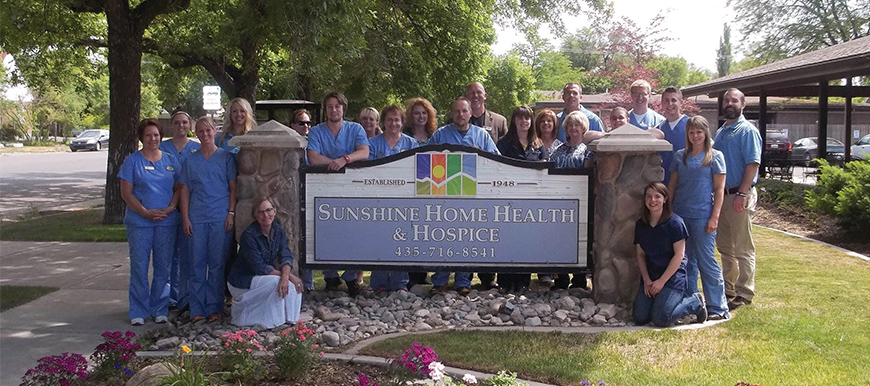Working with Alzheimer’s
According to the Alzheimer’s Association, an estimated 5.3 million Americans have Alzheimer’s disease.
Some of those with Alzheimer’s from Cache County live at the Sunshine Terrace Foundation in Logan, where the Alzheimer’s wing is named Memory Lane, and the majority of those with the disease don’t realize they are in a nursing home.
Utah State University students Kailey Young and Emily Edwards are both interns at Sunshine Terrace and interact with Alzheimer’s patients on a daily basis.
“It’s really fun to play with them, just because they like to interact with you,” Edwards said. “You just have to figure out what each of them likes to do. I’m enjoying figuring that out.”
Young said it’s all about the connection with the resident.
“It’s good to take that personal time, even though we know they’re not all there,” Young said. “Let them know that you are interested in them, whatever they might be talking about.”
Both Edwards and Young help in the recreation therapy department at Sunshine Terrace, where aides run sensory activities, ranging from dancing to puzzles. These activities aim to maintain the physical and cognitive abilities of the residents, which varies greatly among those with Alzheimer’s.
“There are some that are pretty much unresponsive, so I’ll usually just rub something textured on their face so they are getting something,” said recent USU graduate and recreation therapy aide Nicole Godfrey, “And then there are some that are pretty cognitively highly functioning, and I rely on them to help guide the group.”
One challenge of the group activities is some of the people with Alzheimer’s or dementia wander off when they forget what they are doing. Recreation therapy director Terry Hansen said in that situation, you just have to reassure them. If they insist on trying to play something else, you have to play along.
“It’s about entering into their world rather than seeing it from your own,” Hansen said. “It’s really easy to say, ‘What you’re saying right now is ridiculous. You’re not a child anymore and your brother and sister aren’t with you.’”
However, she said while their world is not reality, it is their reality. They might not understand why you don’t understand.
“It can be frustrating for the residents,” said Edwards. “You have to know how to respond to it.”
This knowledge of how to respond and interact is exactly why those who work with those with Alzheimer’s find awareness to be such an important issue.
“The vast majority of the world are going to know somebody with Alzheimer’s or dementia at some point in their life,” Hansen said. “And knowing the signs…will help them to be able to be more understanding and not get as frustrated.”
With how prevalent the disease is, Young said it is especially important for families to know how to respond.
“It can take a toll on the family,” she said. “Understanding what an individual with Alzheimer’s is going through is really important for the relationship.”
Hansen encourages students to volunteer and get to know people with Alzheimer’s as adults that deserve respect and have something to teach.
“Although they can’t remember what they did yesterday, they remember what they did 60 years ago, and they remember the lessons they learned 60 years ago,” she said.
More information about Alzheimer’s and National Alzheimer’s and Brain Awareness month can be found at the Alzheimer’s Association website, alz.org.

